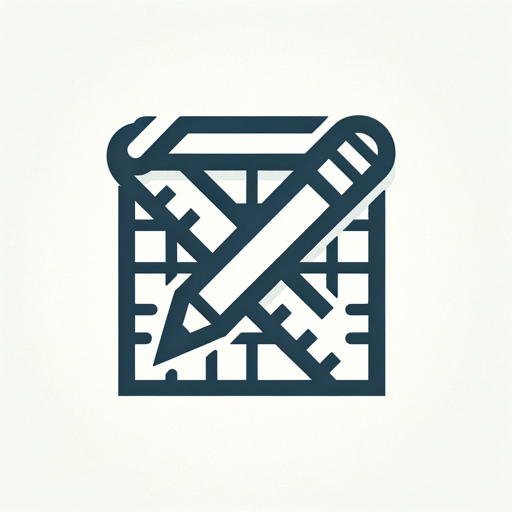System Deisgn-scalable system design tool.
AI-powered system design for all your needs.
design a proximity service
design google map
design payment system
Related Tools
Load More
Software Architect GPT
Builds new software architecture documents by understanding user requirements and design constraints

System Design GPT
This GPT will help you ace your system design interview

Electronics Hardware Design GPT
Expert in electronics and hardware design, circuit and PCB guidance

Design System GPT
Mentor for designers on creating modern design systems

Solar Engineer Advisor
Expert in solar power station design & equipment, providing the latest info & advice

Software System Design GPT
Designs systems and guides on using mermaid in draw.io
20.0 / 5 (200 votes)
Introduction to System Design
System design is the process of defining the architecture, components, modules, interfaces, and data to satisfy specific requirements. It addresses high-level system architecture as well as detailed design aspects such as database choices, APIs, and scaling strategies. System design plays a crucial role in the development of scalable, reliable, and maintainable software systems that can handle growing user demands while ensuring performance and availability. It focuses on several key aspects, including load balancing, data storage, caching strategies, and fault tolerance. For example, designing a scalable web application like Instagram involves deciding how to store images, manage user interactions, and handle peak traffic. The challenge is not only in functionality but also in non-functional aspects such as security, performance, and maintainability.

Main Functions of System Design
Scalability Design
Example
Using sharding and replication in databases for a high-traffic social media platform.
Scenario
A social media platform like Instagram, which handles millions of users, needs a system that can scale horizontally. By dividing the user data into shards and using replication, the system can handle more requests without bottlenecks. This strategy allows the platform to add more database servers as traffic grows.
Fault Tolerance
Example
Designing a multi-region deployment for an e-commerce platform to ensure continuous availability.
Scenario
For an e-commerce platform like Amazon, fault tolerance is crucial to ensure that even if one data center goes down, the system remains operational. By replicating services and data across different geographical regions, the platform can automatically redirect traffic to healthy servers and databases.
Load Balancing
Example
Using a load balancer to distribute traffic across multiple servers in a news website.
Scenario
A news website like CNN experiences traffic spikes when major events occur. A load balancer distributes incoming requests across a pool of servers, ensuring that no single server gets overwhelmed, thus improving the overall availability and performance of the site.
Ideal Users of System Design Services
Software Architects
Software architects design the high-level structure of applications and systems, focusing on scalability, reliability, and maintainability. They benefit from system design services by learning how to build efficient architectures that can scale to millions of users, ensuring robustness in production environments.
Backend Engineers
Backend engineers are responsible for building and maintaining the core services of an application, such as databases, APIs, and caching layers. They benefit from system design by implementing design patterns like microservices, fault-tolerant systems, and distributed databases to handle large-scale data processing and user interactions.

How to Use System Design
Visit aichatonline.org
Visit aichatonline.org for a free trial without login, no need for ChatGPT Plus.
Explore the Features
Review different design tools, frameworks, and examples available for building scalable systems. Familiarize yourself with the templates provided for various architectural challenges.
Define Your System
Outline your system's functional and non-functional requirements. Use templates and customizable models to guide your system design decisions.
Design and Test
Create and iterate on system diagrams, data models, and workflows. Test scalability options and evaluate potential bottlenecks in your design using simulation features.
Collaborate and Share
Utilize collaboration tools to get feedback from peers or mentors. Share and export your design in different formats for interviews or project presentations.
Try other advanced and practical GPTs
ISO26262 System Software Architect Pro
AI-powered automotive system design compliance.

Medi Translate
AI-powered precision translation, made easy.

ChatUU Translate
AI-powered translations for natural communication.
SRT Translate
AI-powered subtitle translation made easy.

JSON Translator
AI-powered JSON Translation, Simplified.

parent help
AI-powered parenting guidance

Car Advisor
AI-powered personalized car recommendations.

Car Identifier
AI-powered car recognition and insights

Business Card Creator
AI-powered custom business card designs.

Invitation Card
AI-Powered Invitation Creation Tool

Virail - Top Train Routes
AI-powered train route discovery

TOP NEWS
AI-powered news tailored for you

- Web Development
- API Design
- System Architecture
- Cloud Solutions
- Scalability Testing
Frequently Asked Questions
What types of systems can I design?
System Design supports a range of systems including microservices, distributed databases, real-time applications, and cloud-native solutions. It provides tools for designing both small-scale systems and large-scale architectures.
How does System Design help with scalability?
The platform offers insights on scaling strategies like sharding, partitioning, and replication. You can model load distribution and understand trade-offs between vertical and horizontal scaling.
Can I simulate system performance?
Yes, System Design includes simulation features that allow you to test system performance under various loads, helping you understand potential bottlenecks and scalability issues.
Is there a collaboration feature?
Yes, you can collaborate with teammates by sharing your designs, allowing for feedback and iterative improvements. Real-time collaboration is supported.
Do I need prior knowledge to use the platform?
Basic understanding of system architecture is helpful but not required. The platform includes guides and templates that make it easier to start, even for beginners.